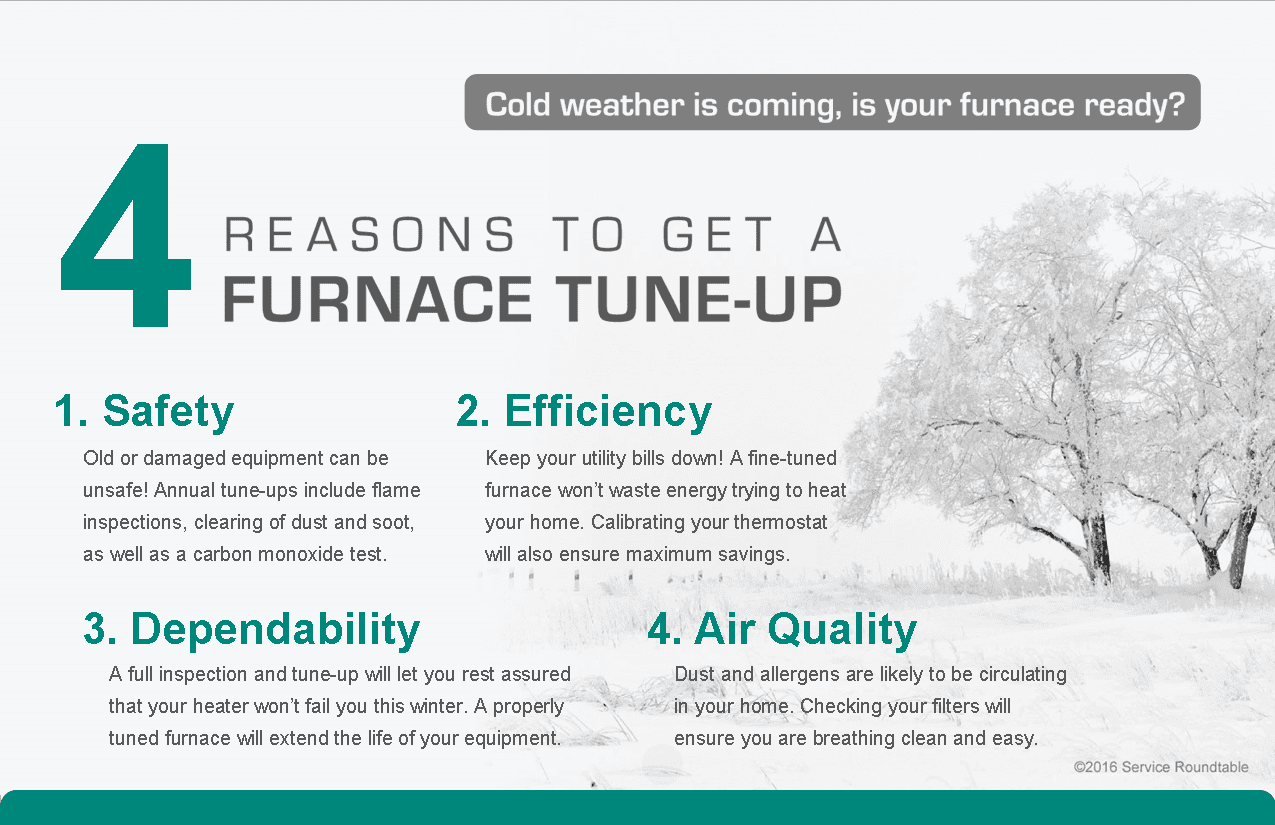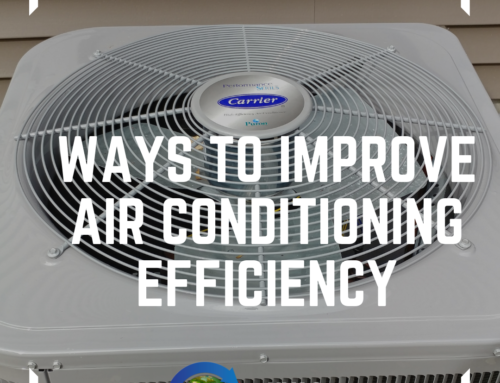 Most people never think about their heating system until it breaks down. A catastrophic failure of your furnace could occur at any time, and that failure could result in a gas leak, fire or carbon monoxide poisoning. The only way to prevent that type of disaster is with regular inspections of your heating system.
Most people never think about their heating system until it breaks down. A catastrophic failure of your furnace could occur at any time, and that failure could result in a gas leak, fire or carbon monoxide poisoning. The only way to prevent that type of disaster is with regular inspections of your heating system.
When you have your tune-up and safety inspection performed, you’ll not only be protecting yourself from potential hazards, you’ll also be increasing the efficiency of your system, improving your air quality and preventing untimely breakdowns that, at the very least, will leave you uncomfortable, and most likely will occur at the worst possible time.
4 Reasons to Get a Furnace Tune-Up
1. Safety. Old or damaged equipment can be unsafe. Annual tune-ups include flame inspections, clearing of dust and soot, as well as a carbon monoxide test.
2. Efficiency. Keep your utility bills down! A fine-tuned furnace won’t waste energy trying to heat your home. Calibrating your thermostat will also ensure maximum savings.
3. Dependability. A full inspection and tune-up will let you assured that your heater won’t fail you this winter. A properly tuned furnace will extend the life of your equipment.
4. Air Quality. Dust and allergens are likely to be circulating in your home. Checking your filters will ensure you are breathing clean and easy.
Furnaces must be sized correctly to work right
Your furnace needs to be correctly sized to provide efficient heating and cooling and avoid excessive repairs. A furnace sized too small will not deliver, or it will strain to deliver enough heating and cooling to your home, while an over-sized furnace will waste energy and money. Both will lead to excessive breakdowns and premature failure.
When we get called to a home with heating and/or cooling problems, one of the most common issues we confront is a furnace that’s improperly sized. For the most part it comes from either laziness or lack of knowledge by the person who installed or replaced the furnace.
Common sense tells us that bigger homes probably will require larger furnaces, but a lot more goes into selecting the proper size for any given amount of space. Proper size should be based on energy-loss calculations that take into account window areas, the amount of insulation and other factors. This evaluation needs to be done room by room. Professional companies like ours used tried-and-true manuals and computer programs to guide us through the calculations.
Energy-loss calculations need to be done when replacing a furnace, as well as when installing a new one. One simple reason is that the old equipment might have been improperly sized, which might well be the reason it broke down. Even if the old furnace was right for the job, replacing older units with new high-efficiency models often enables you to downsize to a unit that can do more with less and save you energy and money in the process.
HVAC Industries provides customers with excellent service because we always send experienced, professional, highly-trained HVAC technicians to homes and businesses. Contact us now for more information!
Source: www.serviceroundtable.com






